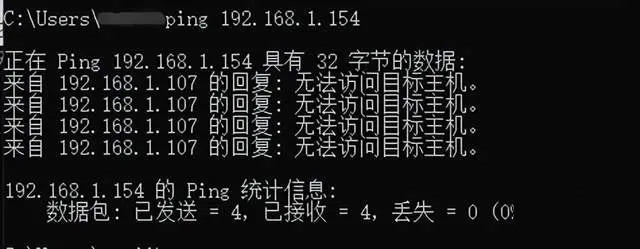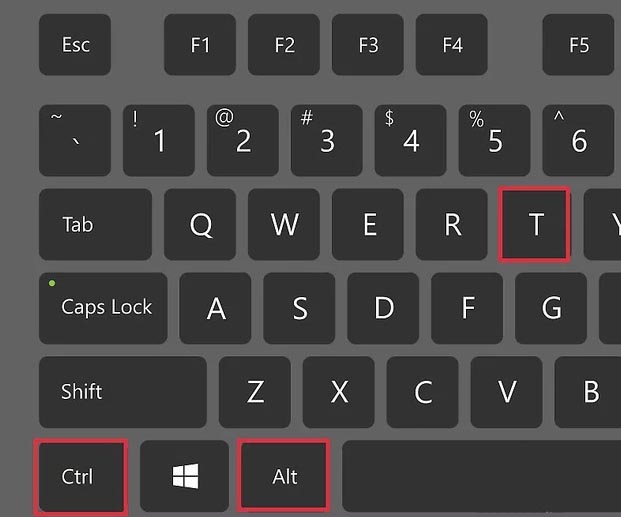"Gateway" works on the third layer of the OSI reference model, the "network layer". The purpose of the network layer is to realize transparent transmission of data between two end systems. Specific functions include addressing and routing, connection establishment, maintenance and termination, etc. It provides services that eliminate the need for the transport layer to understand the data transmission and switching technologies in the network.

The operating environment of this tutorial: Windows 7 system, Dell G3 computer.
"Gateway" works in the "network layer" of the OSI reference model.
Related recommendations: "Programming Video"
The network layer is the third layer in the OSI reference model, between the transport layer and the data link layer It further manages the data communication in the network based on the transmission function of data frames between two adjacent endpoints provided by the data link layer, and manages to transmit the data from the source end to the destination end through several intermediate nodes, thereby Provide the most basic end-to-end data transmission service to the transport layer. The main contents include: virtual circuit packet switching and datagram packet switching, routing algorithm, congestion control method, X.25 protocol, Integrated Services Data Network (ISDN), Asynchronous Transfer Mode (ATM) and Internet interconnection principles and implementation.
The purpose of the network layer is to realize transparent transmission of data between two end systems. Specific functions include addressing and routing, connection establishment, maintenance and termination, etc. It provides services that eliminate the need for the transport layer to understand the data transmission and switching technologies in the network.
The network layer mainly provides services for the transport layer. In order to provide services to the transport layer, the network layer must use the services provided by the data link layer. The main role of the data link layer is to solve the communication problem between two directly adjacent nodes, but it is not responsible for solving the communication problem when the data passes through multiple transfer nodes in the communication subnet. Therefore, in order to realize the communication between the two terminals, The transparent transmission of data between systems allows the source data to transparently reach the destination through multiple transfer nodes in the communication subnet via the optimal path, so that the transport layer does not need to care about the network topology and the communication medium used. and switching technology, the network layer must have the following functions:
Packet and packet switching: encapsulate the data messages received from the transport layer into packets (Packet, also known as "packet" ) and then transmitted down to the data link layer.
Routing: Selecting the most appropriate path for a packet through the communication subnet through a routing algorithm.
Network connection multiplexing: Create logical links for the transmission of packets between nodes in the communication subnet, and multiplex multiple network connections on one data link (multiple time division is used) reuse technology).
Error detection and recovery: Generally, the header checksum in the packet is used for error checking, and the acknowledgment and retransmission mechanism is used for error recovery.
Service selection: The network layer can provide datagram and virtual circuit services for the transport layer, but the network layer of the Internet only provides datagram services for the transport layer.
Network management: Manage the data communication process in the network, try to transmit the data from the source to the destination through several intermediate nodes, and provide the most basic end-to-end data for the transport layer Delivery Service.
Traffic control: Traffic control is achieved through traffic shaping technology to prevent performance degradation of the communication subnet caused by excessive traffic.
Congestion control: When the data traffic of the network exceeds the rated capacity, network congestion will occur, causing the network's throughput capacity to drop sharply. Appropriate control measures are therefore required for diversion.
Network interconnection: Connect one network to another network to achieve cross-network communication between users.
Fragmentation and reassembly: If the packet to be sent exceeds the allowed length of the protocol data unit, the network layer of the source node will fragment the packet and the fragments will reach the destination. After the host, the network layer of the destination node reassembles the original packet.
To read more related articles, please visit PHP Chinese website! !
The above is the detailed content of Which layer does the gateway work on?. For more information, please follow other related articles on the PHP Chinese website!
 网关Ping不通怎么回事?Ping不通什么原因?Mar 13, 2024 pm 03:40 PM
网关Ping不通怎么回事?Ping不通什么原因?Mar 13, 2024 pm 03:40 PM网络ping不通,是什么回事?其实这是个非常常见的问题了,主要分为两种情况,同网段ping不通和不同网段ping不通,下面就来看看详细内容吧。 同网段ping不通的原因ping命令无法连接的情况通常有两种:一是在同一网段内无法ping通的IP地址,另一种是在不同网段内无法ping通的IP地址。这两种情况具有不同的解决方法。首先,我们来讨论在同一网段内ping不通的情况。 一、同网段ping不通,结果是“无法访问目标主机” 目的ip和源ip是同一网段的,ping的结果是&l
 网关和路由器哪个网速快Jun 19, 2023 pm 03:06 PM
网关和路由器哪个网速快Jun 19, 2023 pm 03:06 PM网关WiFi和路由器WiFi的区别主要体现在功能、支持上网的终端数量、WiFi信号覆盖范围这三个方面。网关WiFi是光猫和路由器的结合体,功能更多,但支持上网设备数量较少,WiFi信号覆盖范围也不如路由器WiFi。
 osi模型中完成寻址和路由选择是哪一层Jul 08, 2022 pm 04:21 PM
osi模型中完成寻址和路由选择是哪一层Jul 08, 2022 pm 04:21 PMosi模型中完成寻址和路由选择是“网络层”。网络层主要是为传输层提供服务,可通过路由选择算法为分组通过通信子网选择最适当的路径,可使用ip地址进行寻址。ip地址是标识每一个节点的网络层地址,在数据传输过程中根据目标ip地址及子网掩码计算目标网络地址,然后根据目标网络地址进行寻址。
 网关怎么设置Jan 05, 2024 pm 01:56 PM
网关怎么设置Jan 05, 2024 pm 01:56 PM设置网关的一般步骤是:1、首先确定要设置的设备的IP地址和子网掩码;2、打开设备的网络设置或网络配置页面;3、在网络设置或网络配置页面上,找到网关设置选项;4、输入要设置的网关的IP地址;5、保存设置并重新启动设备即可。
 修改Linux系统的默认网关的方法是什么?Jan 08, 2024 pm 02:14 PM
修改Linux系统的默认网关的方法是什么?Jan 08, 2024 pm 02:14 PM默认网关就是路由器的IP地址。一般来说,操作系统会在路由器的安装过程中自动检测网关,但是你也可能需要手动更改它。尤其是当网络中有多个网络适配器或路由器时,往往需要手动添加或更改网关,该怎么修改呢?下面我们就来看看详细的教程。一、使用终端1、打开终端。你可以从边栏打开终端程序,或按下Ctrl+Alt+T组合键来打开它。2、浏览当前默认网关信息。你可以输入route,按下Enter,来查看当前的默认网关设置。“默认”旁边的地址会显示当前默认的网关地址,它被分配到的界面则显示在桌面右侧。
 蓝牙mesh网关是什么意思Jan 31, 2024 pm 12:36 PM
蓝牙mesh网关是什么意思Jan 31, 2024 pm 12:36 PM蓝牙mesh网关相信大家都听说过,但是也有许多人不知道蓝牙mesh网关是什么意思。其实很简单,蓝牙mesh网关的意思是网关采用的是蓝牙mesh协议。蓝牙mesh网关是什么意思答:网关采用的是蓝牙mesh协议。内置蓝牙mesh网关可以让家居环境更加舒适。蓝牙mesh网关详情1、蓝牙mesh网关的功耗低,可以更大规模的使用各种环境。2、操作更加便捷。用户使用起来会更加的顺手。3、蓝牙mesh网关中的每个智能家居硬件都是可以仙湖连接的,操作起来非常的方便。4、网络节点非常的稳定,所以网管会非常的固定。
 网关工作是在哪一层Aug 15, 2023 am 10:01 AM
网关工作是在哪一层Aug 15, 2023 am 10:01 AM网关工作在第三层“网络层”和第七层“应用层”:1、网络层网关,被称为路由器,负责在不同的网络之间传递数据包,并根据目标IP地址进行转发和路由决策;2、应用层网关,称为代理网关或应用网关,提供应用层协议的转换和处理功能,允许不同类型的应用程序之间进行通信。
 无法连接到网关是什么问题Jun 28, 2023 pm 01:13 PM
无法连接到网关是什么问题Jun 28, 2023 pm 01:13 PM无法连接到网关的原因:1、物理连接问题,可以检查电缆是否插好并确保连接牢固;2、IP地址冲突,可以通过将设备的IP地址设置为动态获取或手动更改设备的IP地址解决;3、路由器问题,可以尝试重新启动路由器、更新固件或重置路由器到出厂设置;4、防火墙设置,检查防火墙设置,并确保允许所需的网络连接通过;5、DNS问题,尝试手动更改DNS设置或使用公共DNS服务器可能有助于解决问题。

Hot AI Tools

Undresser.AI Undress
AI-powered app for creating realistic nude photos

AI Clothes Remover
Online AI tool for removing clothes from photos.

Undress AI Tool
Undress images for free

Clothoff.io
AI clothes remover

AI Hentai Generator
Generate AI Hentai for free.

Hot Article

Hot Tools

SublimeText3 Mac version
God-level code editing software (SublimeText3)

SAP NetWeaver Server Adapter for Eclipse
Integrate Eclipse with SAP NetWeaver application server.

Atom editor mac version download
The most popular open source editor

mPDF
mPDF is a PHP library that can generate PDF files from UTF-8 encoded HTML. The original author, Ian Back, wrote mPDF to output PDF files "on the fly" from his website and handle different languages. It is slower than original scripts like HTML2FPDF and produces larger files when using Unicode fonts, but supports CSS styles etc. and has a lot of enhancements. Supports almost all languages, including RTL (Arabic and Hebrew) and CJK (Chinese, Japanese and Korean). Supports nested block-level elements (such as P, DIV),

SecLists
SecLists is the ultimate security tester's companion. It is a collection of various types of lists that are frequently used during security assessments, all in one place. SecLists helps make security testing more efficient and productive by conveniently providing all the lists a security tester might need. List types include usernames, passwords, URLs, fuzzing payloads, sensitive data patterns, web shells, and more. The tester can simply pull this repository onto a new test machine and he will have access to every type of list he needs.






